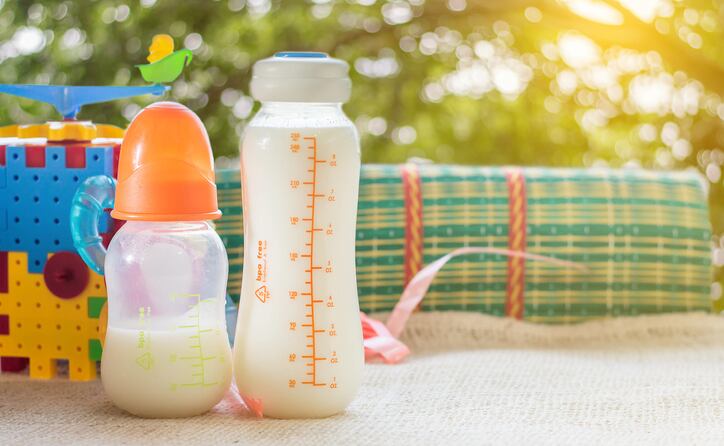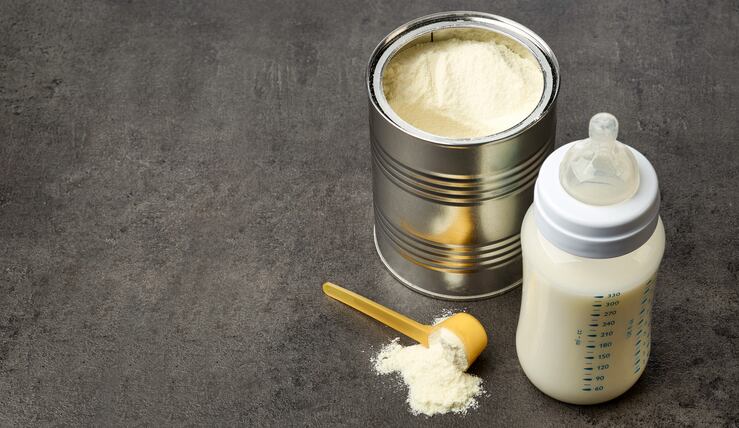Infant and maternal nutrition was the last topic of this year’s Growth Asia Series. Topics discussed previously included two episodes on Healthy Ageing, which featured cognitive and mobility health, and metabolic and digestive health respectively. There were another two topics on plant-based innovation and healthy snacking. [Watch on demand here]
The final episode featured a keynote address by Gregg Ward, head of Open Science Research Center at Danone, and sponsor presentations by Chyn Boon Wong, research associate at Morinaga Milk Industry, and Dr Sigalit Zchut, early life nutrition segment leader at IFF.
There was also a panel debate involving Wong, Dr Zchut, Max Rye, chief strategist at TurtleTree, Monica Meldrum, founder and CEO at Whole Kids, Airing Wang, head of marketing – China at PharmaCare Laboratories, and Jane Li, founder and principal consultant at Li, Page & Co.
A common theme raised throughout the event was how infant formula companies have been exploring different options, including new functional ingredients, milk bases, and product claims to stand out from the competition.
Since COVID-19 broke out, ingredients that support the immune system in early life are increasingly relevant in how companies innovate, keynote speaker Ward said.
Examples include probiotics, postbiotics, and HMOs – which can also act as a prebiotic – he said.
“They [HMOs] are really one of the miracles of human milk. [They are] present in a range and diversity and doses between five to 15 grammes per litre in human milk across the world.
“Whilst this is an exciting area of research and innovation, the technical capabilities of all market players and suppliers are not yet fully able to replicate the total diversity, and importantly, the dose of HMOs.”
He said that Danone has been studying human milk for more than 48 years, including the short chain galacto-oligosaccharides (GOS) and long chain fructo-oligosaccharides (FOS) prebiotics, and also launched a new formula – Aptamil Essensis – in China last year.
“We added to these [Aptamil Essensis] benefits with some of the new identical HMO structures such as 2’-FL and 3’-GL for postbiotics to deliver a dose that is greater than nine grammes per litre within the range of relevance of human milk – always the gold standard in reference.”
To leverage the benefits of synbiotics – the combination of pre/probiotics – the company added the probiotic strain Bifidobacterium breve BBM-16V into its infant formula products.
Last year, it also launched a probiotic that prevents lactational mastitis in breastfeeding mothers or mums-to-be by up to 59 per cent without the use of antibiotics.
Elaborating on probiotics use, Wong from Morinaga highlighted the importance of using human-residential bifidobacterial (HRB) in infant nutrition products.
“Research shows that the HRB species, such as Bifidobacteria longum (B. longum), B. breve and B. infantis have many physiological advantages over the non-HRB species.”
Some of the HRB strains clinically proven to support infant and children’s health include B. longum BB536, B. breve M-16v, and B. infantis M-63. They were shown to ease symptoms of upper respiratory infections, allergy prevention, and infantile colic.
“There are also some emerging scientific concepts such as the gut-breast axis, which we continue to explore in partnership with leaders from across the world and here in China,” Ward said, on future research.
Similarly, Rye from TurtleTree said the 'Holy Grail' in infant nutrition would be understanding and incorporating HMOs and other components present in the human milk into infant nutrition products.
“One of the coolest things that I think we can look forward to in the future is closing that gap [and make infant formula resemble] closer to human milk.
“And that's really where biotech and the type of stuff that TurtleTree and a few other companies globally are working on, [which] is being able to make not just HMOs but the other components that are present in human milk as well.
“I think that that will eventually be the Holy Grail and it will also be much more of sustainable as well. It will be quite interesting to see how the future shapes out,” he said.
His company, based in Singapore, is working on infant nutrition by developing breast milk using stem cells from volunteers to create mammary glands that lactate.
Different milk bases
Another area that companies are competing in, is the use of different milk bases, such as a2 milk, sheep milk, and goat’s milk.
“Apart from the special ingredients that have been quite popular in the past few years, we are now seeing a shift towards other alternative milk base, such as sheep milk and goat's milk,” said Li from Li, Page and Co.
Based on her knowledge, there are also companies exploring buffalo milk and camel milk.
“If you want to talk about innovation, this is the sort of area that how much efforts the companies are trying to go into to differentiate themselves.”
Companies manufacturing sheep milk infant formula include Blue River Dairy from New Zealand, while goat milk players include H&H’s Biostime, Oli6 by Nuchev, Karicare by Danone Nutricia.
Product claims
Product claims wise, companies are focusing on immunity, gut health, and organic claims.
“Firstly, they [companies] are trying to move the infant nutrition products closer to breast milk. And secondly, there are actually some focuses on gut trend. Another trend is the increased interest on immunity and increased attention on natural and also organic claims,” Wong said.
“One of the main trends that have been picking up in the last few years is the organic and natural trend. Market research that was done by IFF, as well as numerous reports clearly showed that this trend is becoming very significant.
“Parents, when asked what they're looking for in the formula, are first listing safety and assurance, scientific substantiation, but also, natural, healthy, organic, and also non-GMO,” Dr Zchut from IFF added.
She said that organic claims had seen a resurgence in the China market, while US, Germany, and France were the other major organic infant formula markets.
Further research
There is a need to conduct research on the best dosage formats and delivery systems to deliver the best results.
“For instance, when we are talking about lactoferrin, what is the best format for it? Is it the liquid or the powder or gummy format?” Wang from PharmaCare Laboratories – the company behind children’s supplement brand Nature’s Way said.
“The industry is [also] lacking in the study of nutrition deficiency seen in a particular demographic. [For example], what are the nutrition deficiencies seen in south and north China and how can the functional ingredients lead to different results when made in different formats,” she added.
Research in delivery formats is highly relevant since snackification of supplements is becoming more appealing to children.
This was also the reason why Nature’s Way has introduced a range of supplements in gummies and chewable burstlets, while using less additives and sugar in these products at the same time, she said.
Meldrum from Whole Kids – Australia’s organic children’s snacks brand – echoed the importance of scientific evidence, especially in the area of gut health.
“What we are finding now with millennial parents, is that they are sourcing a lot of information, not from their parents, but from other older moms, and what they are looking for is not only health benefits and quality nutrition, but also clean foods.
“They are also looking behind brands, and what they are delivering in terms of not only pure product attributes and benefits but also what brands are doing in terms of sustainability,” she said.





